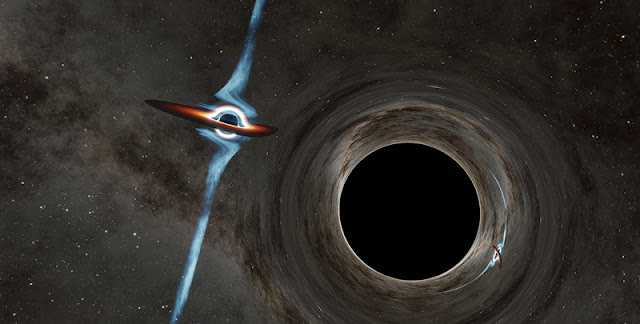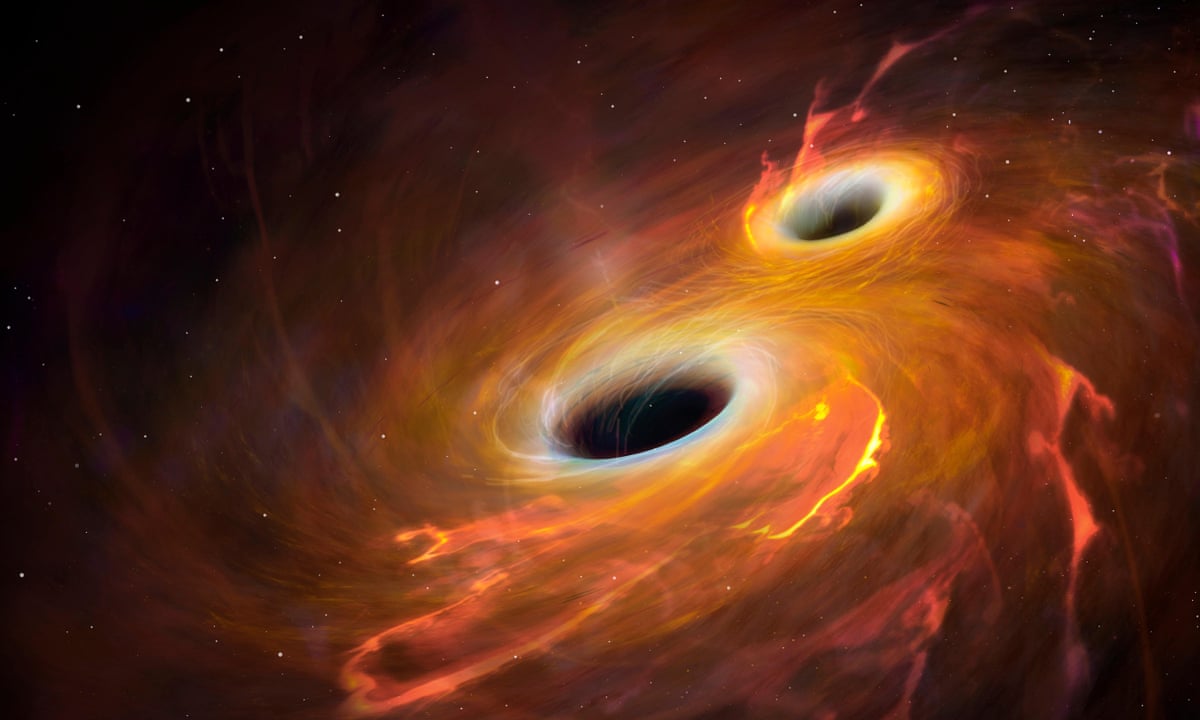Astronomers have discovered two supermassive black holes that are 99% of the way to a violent collision that will rock the very fabric of space-time.

The black holes, which share the name PKS 2131-021, are locked in a dance of doom about 9 billion light-years from Earth, according to a study published Feb. 23 in The Astrophysical Journal Letters. The two objects have moved steadily toward each other for about 100 million years, according to a statement from NASA, and now they share a binary orbit, with the two black holes orbiting each other every two years or so.
About 10,000 years from now, the two black holes will merge, sending gravitational waves — ripples in the fabric of space-time originally predicted by Albert Einstein — surging across the universe, the researchers said. Though none of us will witness that epic collision, studying PKS 2131-021 now could reveal new information about how supermassive black holes form and what happens when two of them collide.
Flickers of a Monster
Supermassive black holes — extremely dark, dense objects that are hundreds of millions of times more massive than Earth’s sun — sit at the hearts of most, if not all, galaxies in the universe. Astronomers don’t know how these objects get to be quite so big, but one possibility is that the universe’s largest black holes result from at least one merger between two smaller black holes, according to NASA. The new study may help to confirm that hypothesis.
PKS 2131-021 is a special type of black hole known as a blazar — basically, a supermassive black hole that happens to be pointing a jet of supercharged matter directly at Earth. That matter originates from the rings of hot gas that form around certain black holes; when a black hole draws in that gas with its powerful gravity, some matter may escape, instead being propelled away in a jet of plasma traveling at nearly the speed of light.
The authors of the new study were monitoring the brightness of about 1,800 blazars scattered around the universe when they noticed something peculiar: The brightness of blazar PKS 2131-021 fluctuated at regular intervals — so predictably, in fact, that the study authors likened the fluctuations to the ticking of a clock.

The researchers suspected that these variations were the result of a second black hole tugging on the first as the two objects orbit each other every two years or so, but the team needed more data to see how long this pattern held. So the researchers dug into data from five observatories, spanning 45 years. All of the additional data matched the team’s predictions for how the binary blazar’s brightness should change over time.
If the findings are confirmed, PKS 2131-021 would be the second pair of binary black holes ever discovered — and the tightest-knit pair scientists have found. Scientists discovered the universe’s first known black hole binary candidate in 2020 in a galaxy about 3.5 billion light-years from Earth.
However, those black holes orbit each other every nine years, suggesting there is a much greater distance between them than there is between the two members of PKS 2131-021.
The two monster black holes are large enough and close enough that they could unleash gravitational waves in advance of their inevitable collision, the study authors said in a statement. Future observations of PKS 2131-021 will focus on catching those waves in the act.